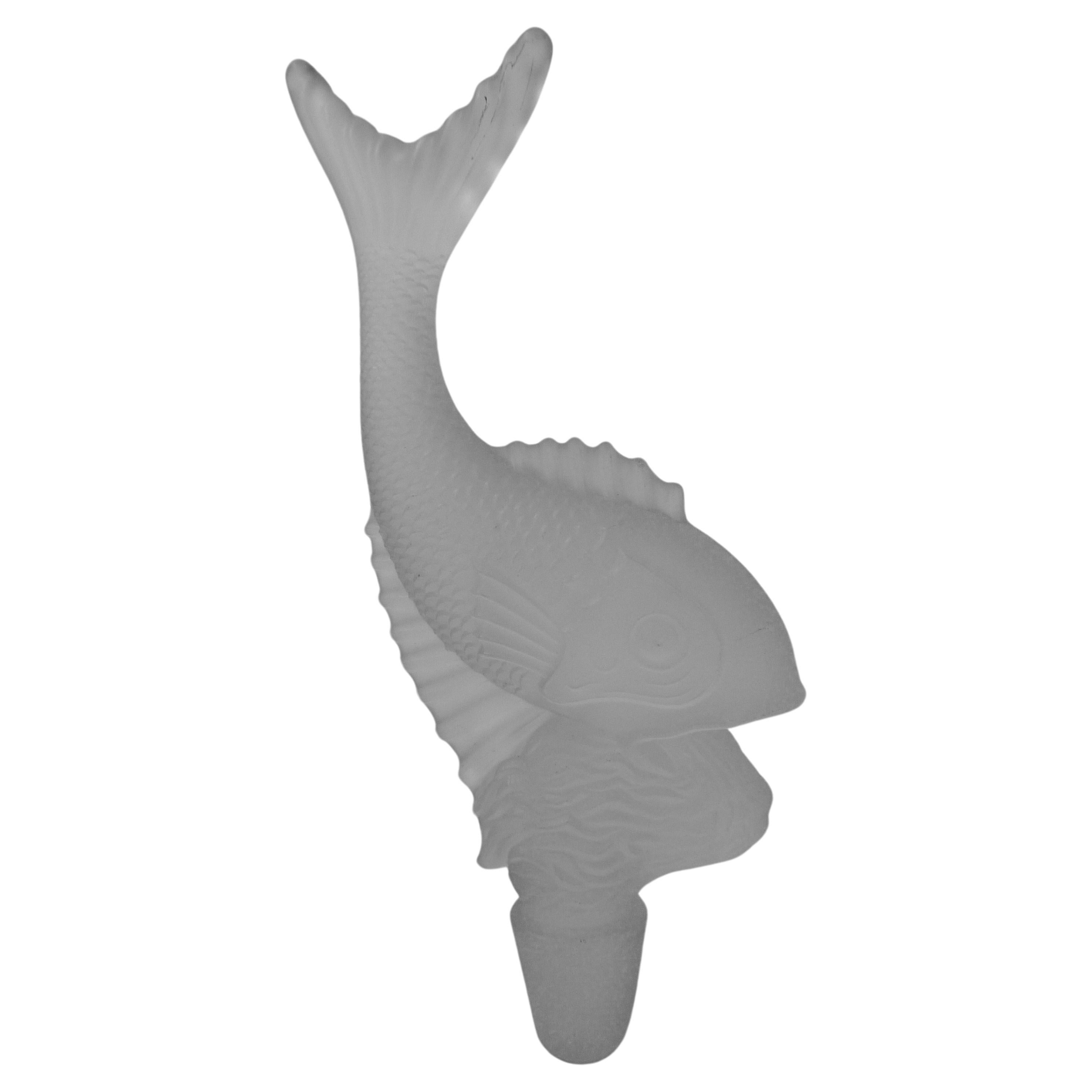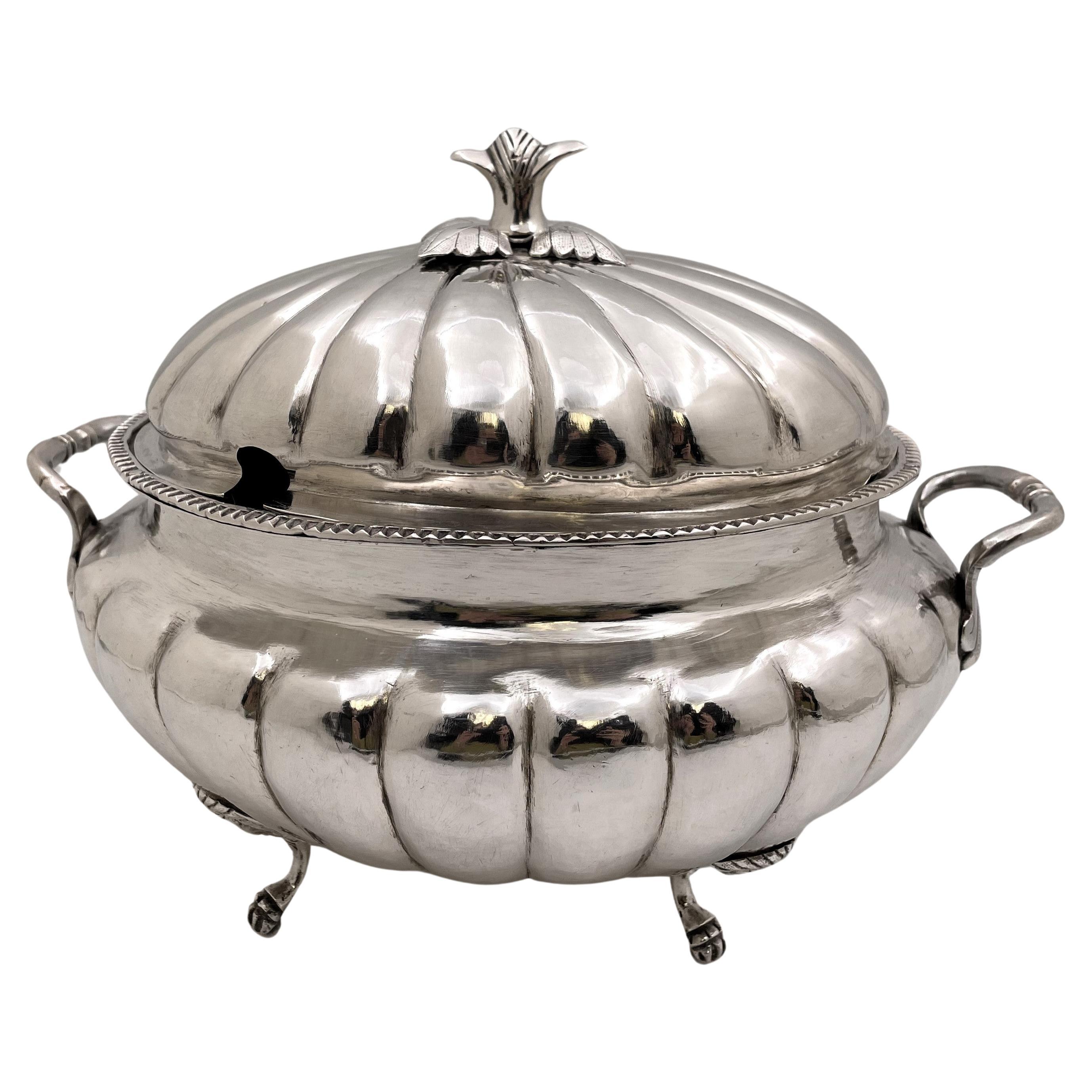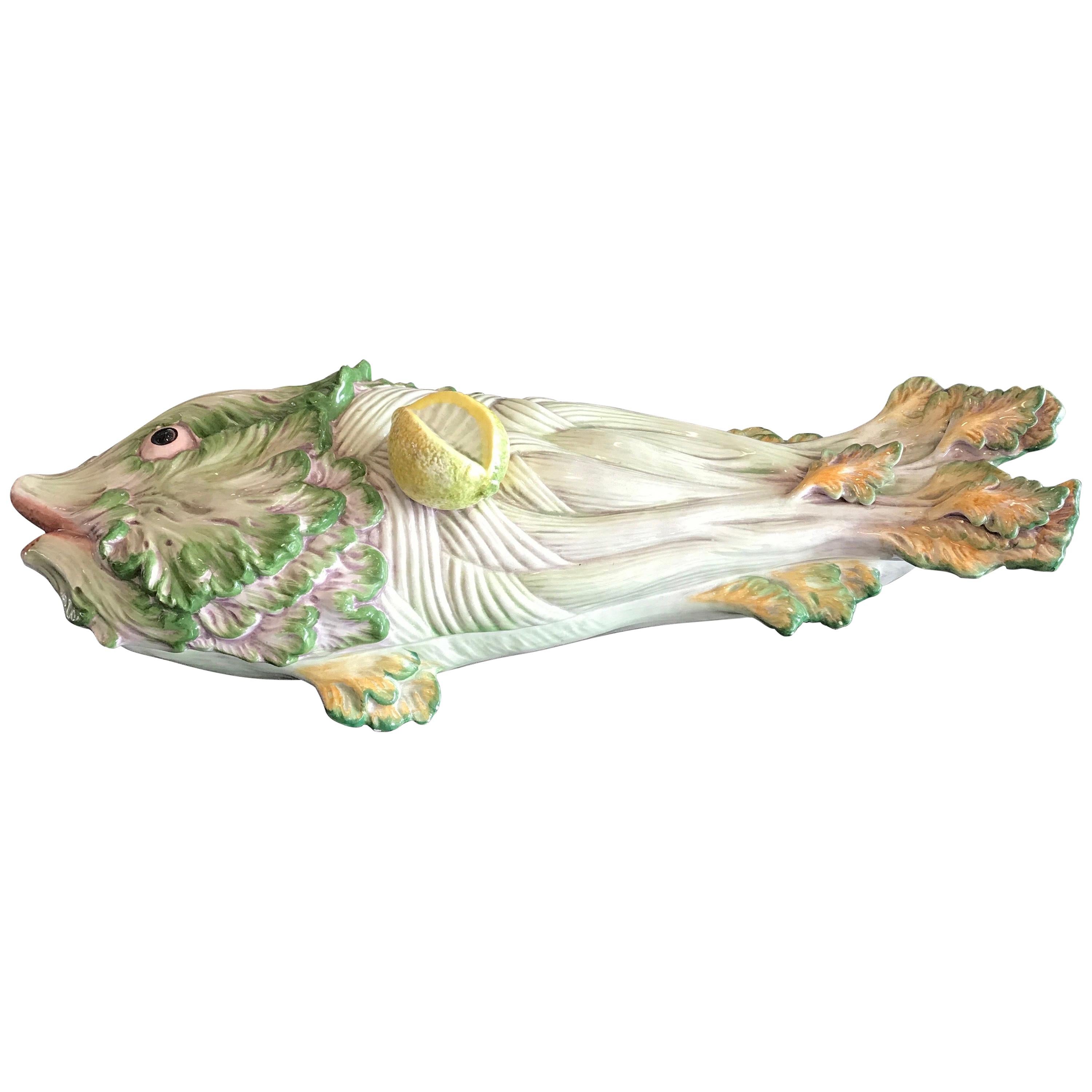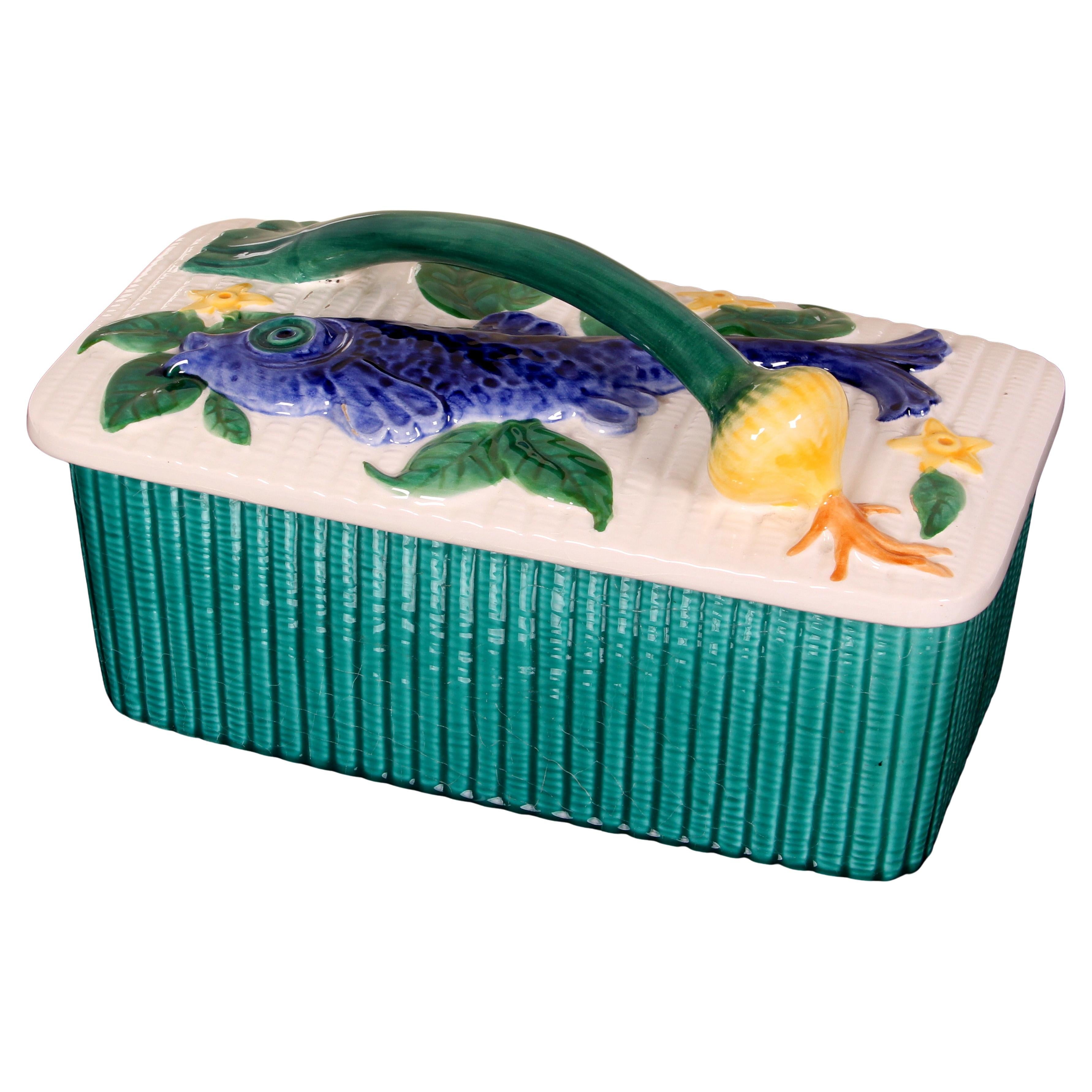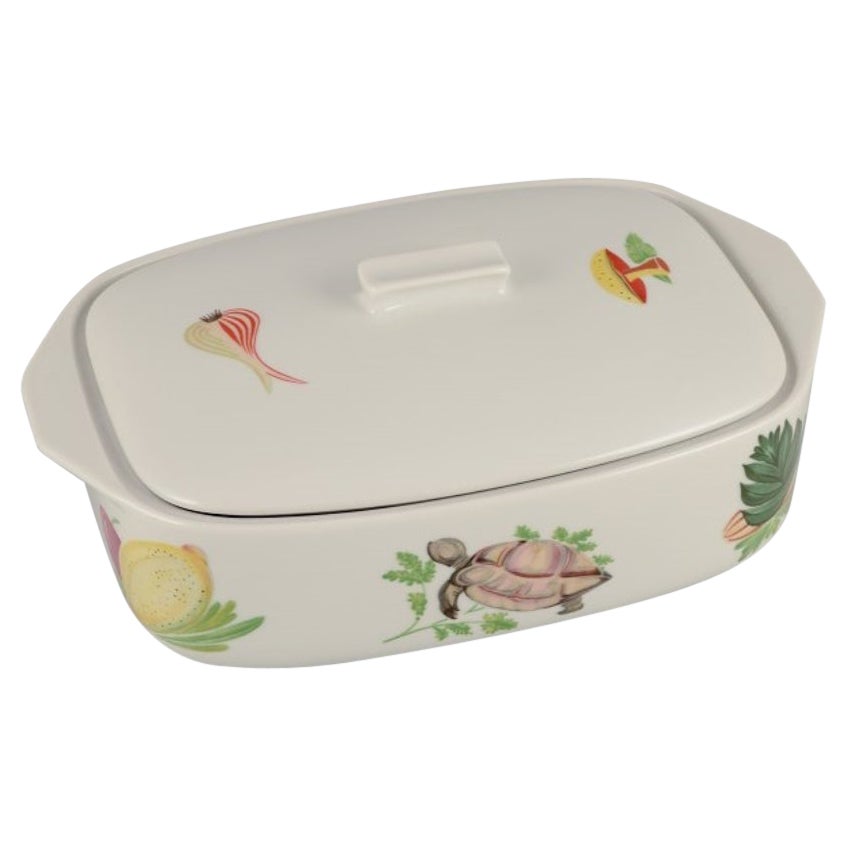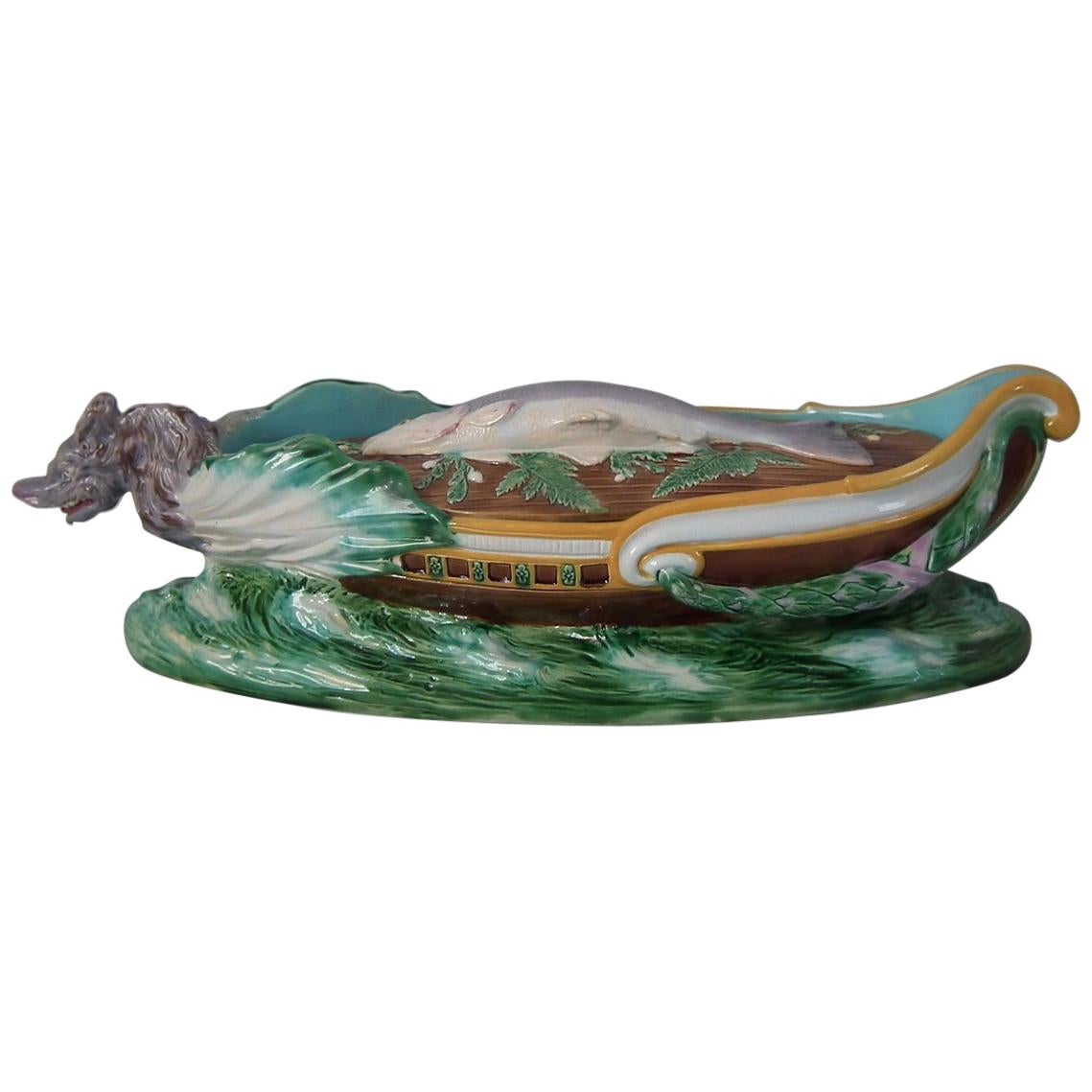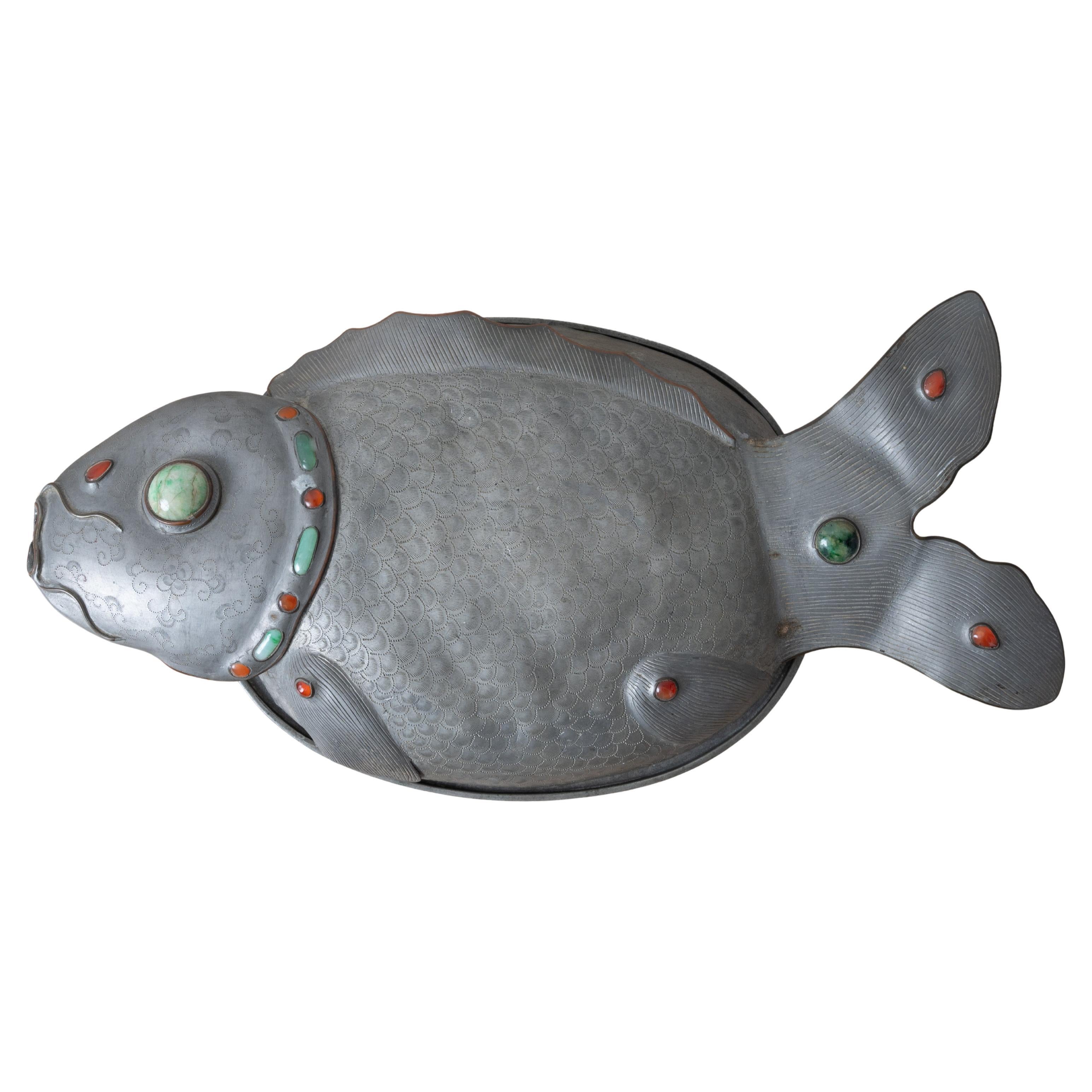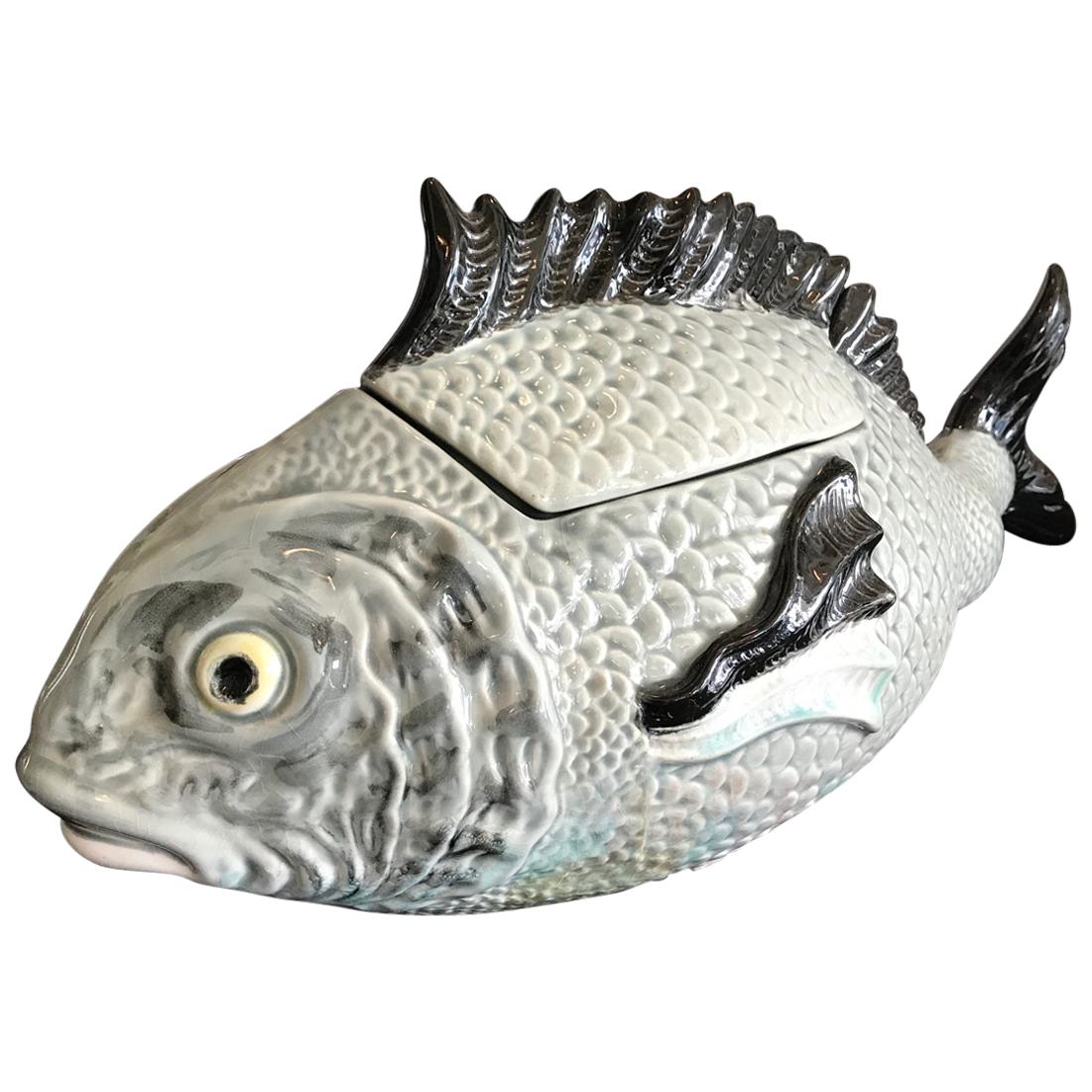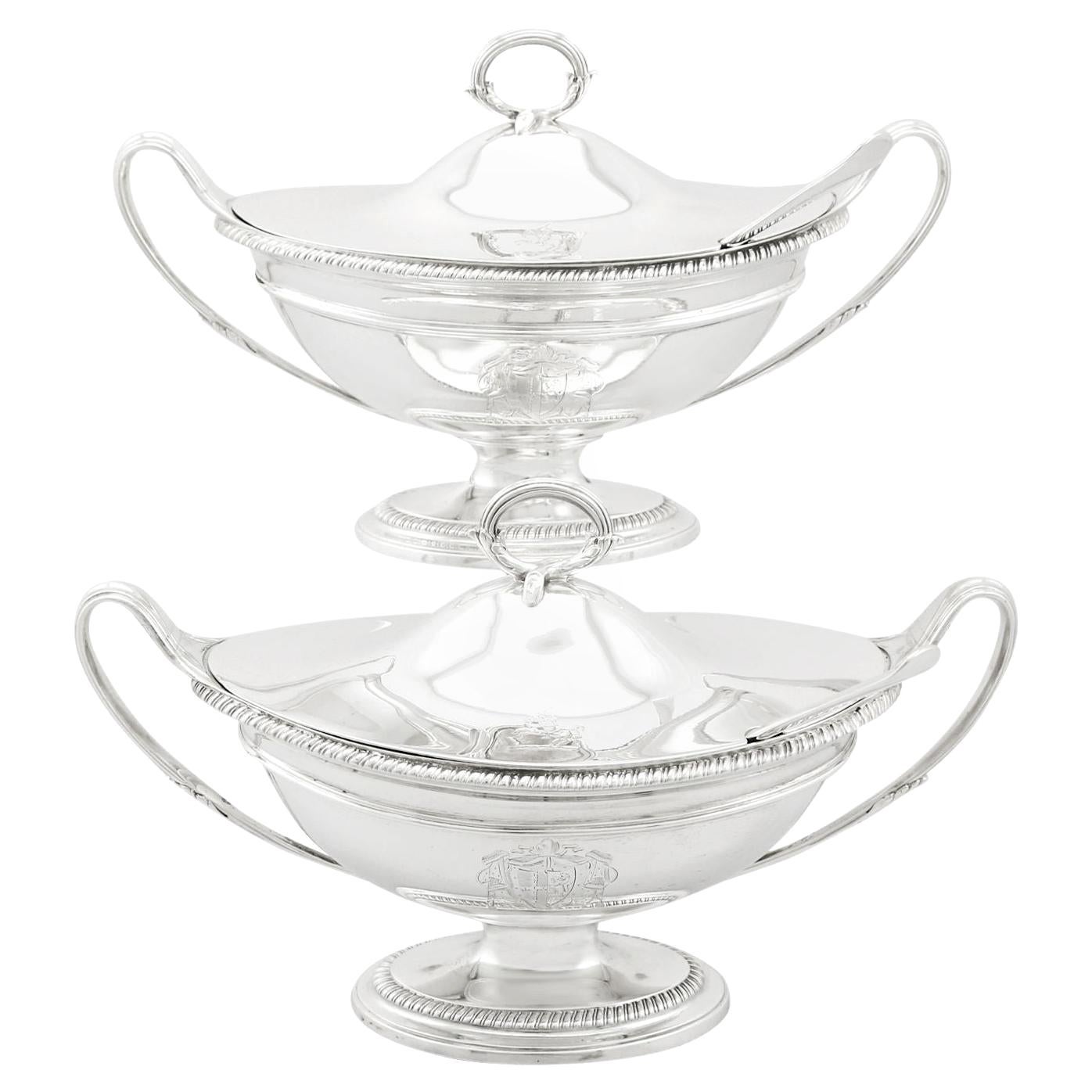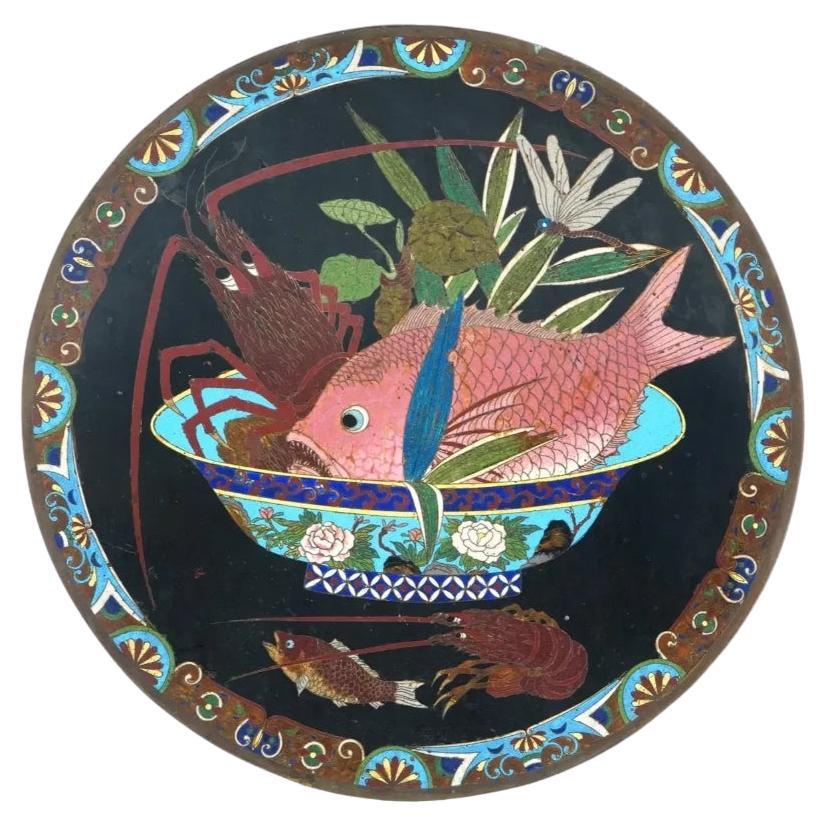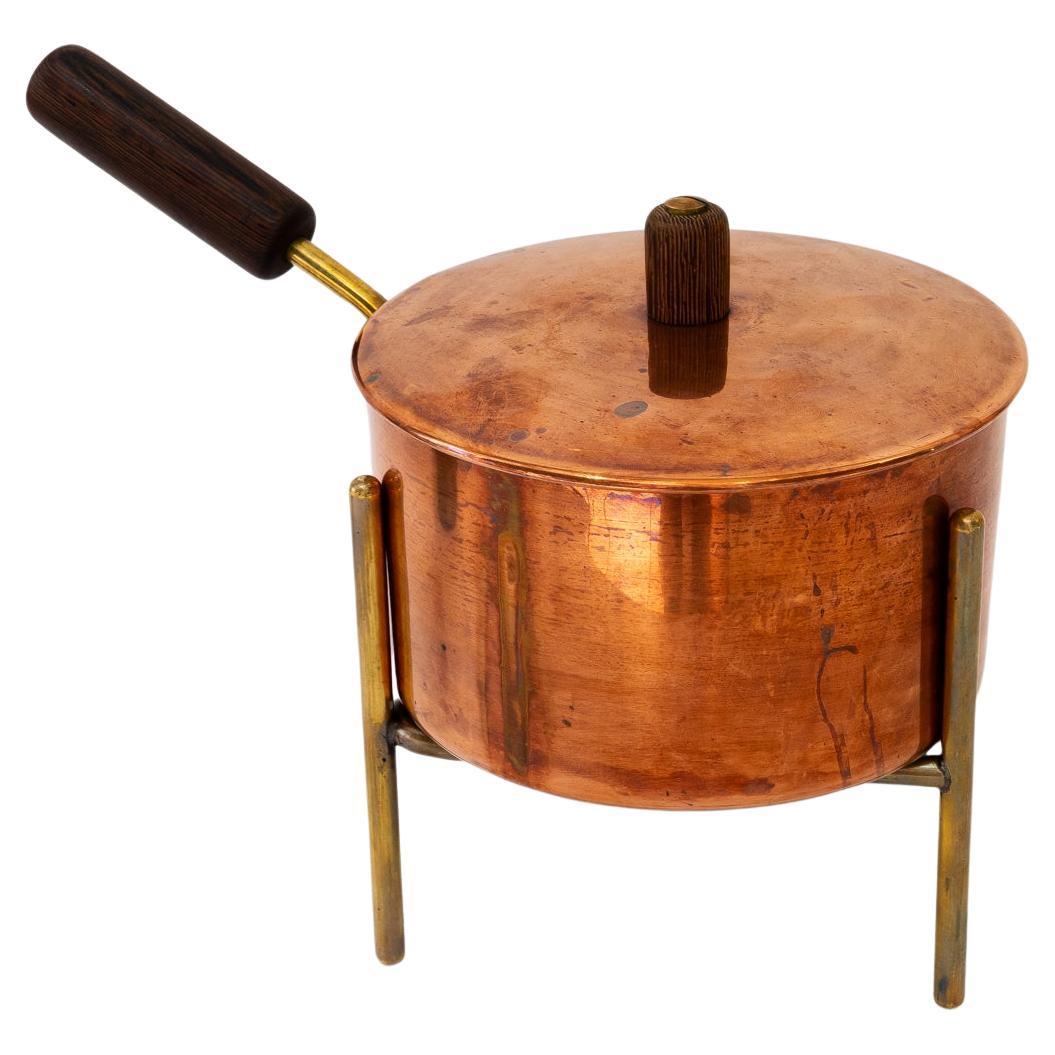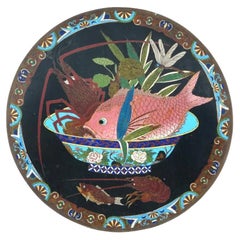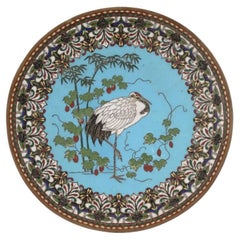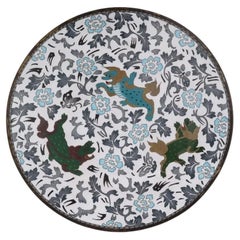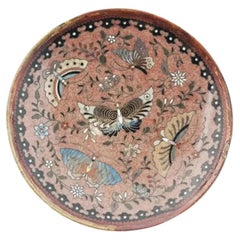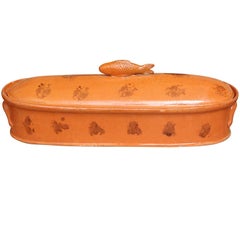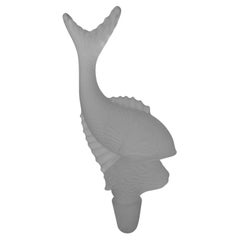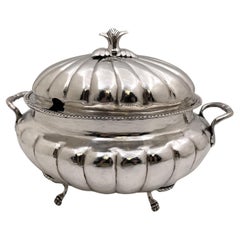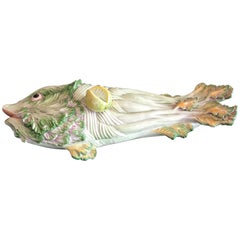
Vintage Japanese Koi Fish Tureen with Cover Marked
View Similar Items
Want more images or videos?
Request additional images or videos from the seller
1 of 12
Vintage Japanese Koi Fish Tureen with Cover Marked
$600List Price
About the Item
- Dimensions:Height: 6.75 in (17.15 cm)Diameter: 16.5 in (41.91 cm)
- Materials and Techniques:
- Place of Origin:
- Period:
- Date of Manufacture:Mid 20th Century
- Condition:Wear consistent with age and use. Good antique condition. Signs of age and wear. Refer to photos.
- Seller Location:Long Island City, NY
- Reference Number:1stDibs: LU7386234688272
About the Seller
4.9
Platinum Seller
Premium sellers with a 4.7+ rating and 24-hour response times
1stDibs seller since 2022
95 sales on 1stDibs
Authenticity Guarantee
In the unlikely event there’s an issue with an item’s authenticity, contact us within 1 year for a full refund. DetailsMoney-Back Guarantee
If your item is not as described, is damaged in transit, or does not arrive, contact us within 7 days for a full refund. Details24-Hour Cancellation
You have a 24-hour grace period in which to reconsider your purchase, with no questions asked.Vetted Professional Sellers
Our world-class sellers must adhere to strict standards for service and quality, maintaining the integrity of our listings.Price-Match Guarantee
If you find that a seller listed the same item for a lower price elsewhere, we’ll match it.Trusted Global Delivery
Our best-in-class carrier network provides specialized shipping options worldwide, including custom delivery.More From This Seller
View AllLarge Meiji Japanese Cloisonne Enamel Plate Charger Fish, Lobster and Shrimp
Located in Long Island City, NY
An antique Japanese enamel over copper plate or charger. The interior of the plate is adorned with a polychrome enamel image representing a bowl with fish and crayfish, a dragonfly a...
Category
Antique Late 19th Century Japanese Meiji Tableware
Materials
Copper, Enamel
Large Antique Meiji Japanese Cloisonne Enamel Charger with Mr.Crane
Located in Long Island City, NY
A large antique Japanese Meiji era enamel over brass charger plate. The plate is enameled with a polychrome image of a naturalistic crane in bamboo trees and branches on turquoise gr...
Category
Antique Late 19th Century Japanese Meiji Tableware
Materials
Brass
Rare Antique Meiji Japanese Cloisonne White Enamel Charger with Dancing Foo Dogs
Located in Long Island City, NY
An antique Japanese Meiji era enamel over brass charger plate. The plate is enameled with a polychrome image of Foo dogs surrounded by a blossoming flower pattern on white ground mad...
Category
Antique Late 19th Century Japanese Meiji Tableware
Materials
Brass
Antique Japanese Cloisonne Enamel Butterfly Plate
Located in Long Island City, NY
An antique Japanese Meiji period cloisonne enamel metal charger plate depicting butterfly images within floral designs. Features geometrical patterns to the border. The backside is adorned with a scrolling motif on a black ground with a central blue circle made in the cloisonne technique. Circa the early 20th century. Antique Japanese Plates...
Category
Early 20th Century Japanese Tableware
Materials
Enamel
Antique Japanese Meiji Cloisonne Enamel Napkin Rings
Located in Long Island City, NY
A pair of antique Japanese copper napkin rings with cloisonne enamel design. Late Meiji era, before 1912. Kyoto school. The items are decorated wit...
Category
Antique Late 19th Century Japanese Tableware
Materials
Copper, Enamel
Large Japanese Meiji Era Cloisonne Enamel Charger
Located in Long Island City, NY
A large antique Japanese, Meiji era, enamel over brass charger or plate. The plate is adorned with polychrome figural medallions depicting landscape and pond views, birds in sakura t...
Category
Antique Mid-19th Century Japanese Meiji Tableware
Materials
Brass, Enamel
You May Also Like
Fish Tureen
Located in Washington, DC
Salmon & Auberginne Painted Large Fish Tureen
Category
Antique 19th Century French Tableware
Materials
Ceramic, Paint
$1,550
Glass Koi Fish Wine Decanter Bottle Stopper
Located in Barcelona, ES
Glass Koi fish decanter bottle stopper of unknown heritage. Most likely French, early/mid 20th century. In the style of Rene Lalique.
Category
20th Century French Tableware
Materials
Glass
South American Silver Tureen/ Covered Bowl
Located in New York, NY
South America, probably Peruvian, silver tureen with its cover, from the 19th century, hand chased and in ovoid form, standing on 4 pawed feet, and exhibiting a finial with natural m...
Category
20th Century South American Tableware
Materials
Silver
Vintage Italian Covered Fish Tureen
Located in West Palm Beach, FL
Hand painted covered fish tureen with lemon handle.
Category
20th Century Italian Serving Pieces
Materials
Porcelain
midcentury SCHRAMBERG MAIOLICA box Barbotine FISH TUREEN TERRINE handpainted
By Schramberg Majolica
Located in Landshut, BY
midcentury
SCHRAMBERG MAIOLICA
Barbotine
FISH TUREEN TERRINE
handpainted
Design Period 1955 to 1965
Production Period around 1960
Country of Manufacture Germany
H / height: 11cm both ~ Gew. / weight: 2950grs
DM / diameter casserole : 30 cm x 15cm x 11cm high ~ 19cm with its lid
MARKED: Schramberger Majolikafabrik 5624
:-: fair condition with some very small chips (see photos)
- Considering the sensitive material I would even say it is in good condition
-- let´s call it charming vintage :-:
To ensure a safe arrival, this item is packed in super-safe packaging.
(up to 10 Kg)
SMF SCHRAMBERG was originally founded in 1820 as Faist'sche Steingutfabrik by the stoneware expert Isidor Faist on the site of the abandoned Schramberg castle. By 1829, Faist and his factory had gained such a good reputation that Baron Ferdinand von Uechtritz became his partner under the new name of Steingut- und Majolikafabrik Uechtritz & Faist. With the Baron's financial support, the partners were able to build a new factory behind the castle, which dramatically increased production. By the 1860s, the company had a permanent workforce of 100 and an impressive number of almost 6,000 homeworkers (decorators, etc.), mainly children and women. From 1882, Faist began taking orders from Villeroy & Boch, who eventually bought the Schramberg pottery in 1883 and continued to operate it as a V&B subsidiary until the early 20th century. In 1911, several of the factory buildings had to be demolished to make way for the local railway, which drastically reduced production and caused Villeroy & Boch to lose interest in the site, which they sold to brothers Moritz and Leopold Meyer in 1912. It was the Meyers who introduced the "SMF" trademark and eventually gave the company its permanent name, Schramberger Majolika-Fabrik. In 1918 the company was transformed from a sole proprietorship to a limited liability company and the transformation was complete.
The Meyer brothers were always on the lookout for new talent, and many famous artists joined the factory or contributed designs in the years that followed. Their decorative ceramics, stylized in vibrant colours, attracted much attention in the 1920s.
Eva Stricker-Zeisel was a prominent designer for the company from 1928 to 1930. Her designs were strongly influenced by the Bauhaus movement and her modern form and decoration designs gave an avant-garde look to part of the production programme. As well as designing the shapes, Eva Zeisel also supplied the intended decorations for the pieces, although the decoration department often adapted her decorations to shapes for which they were not intended. They would even use them on shapes other than those designed by Zeisel and apply decors not designed by her to her shapes. This particularly happened with the very popular 'Mondrian' pattern, which often appeared on non-Zeisel shapes. The factory continued to produce Zeisel's designs for some time after her departure, but she sometimes felt that the designs were not exactly as she had intended.
With the economic crisis of the early 1930s, the focus of production shifted to tableware and utilitarian ceramics, until the Nazis forced Moritz and Leopold Meyer to sell the factory in 1938 as part of the forced aryanisation of the German state. Both emigrated to England with their families during the war, but in 1949 Peter Meyer...
Category
Mid-20th Century German Mid-Century Modern Tableware
Materials
Maiolica
Danild/Lyngby, "Picnic" fireproof lidded fish tureen. 1960s/1970s.
Located in København, Copenhagen
Danild/Lyngby, "Picnic" fireproof lidded fish tureen.
1960s/1970s.
Marked.
Perfect condition.
Dimensions: Length 29.0 cm x Width 19.0 cm x Height 10.0 cm.T
he Danild No. 50 "Picnic" ...
Category
Vintage 1960s Danish Tableware
Materials
Porcelain
Recently Viewed
View AllMore Ways To Browse
Pink Tureen
Pink Glass Dishes Vintage
Koi Fish Glass
Tiffany Flatware Sets Service For 12
French Sauce Spoon
Silver Ice Cream Bowl
Butter Pick
Silver Plated Fish Servers
Venetian Lace
Wallace Stainless Flatware Vintage
Art Deco Salt And Pepper Shakers
Salad Tongs
Silver Salad Tongs
Antique Shaker Table
Antique Silver Fruit Knife
Crystal Salad Plates
Georg Jensen Silver Cactus Pattern
Vintage Curved Knife

